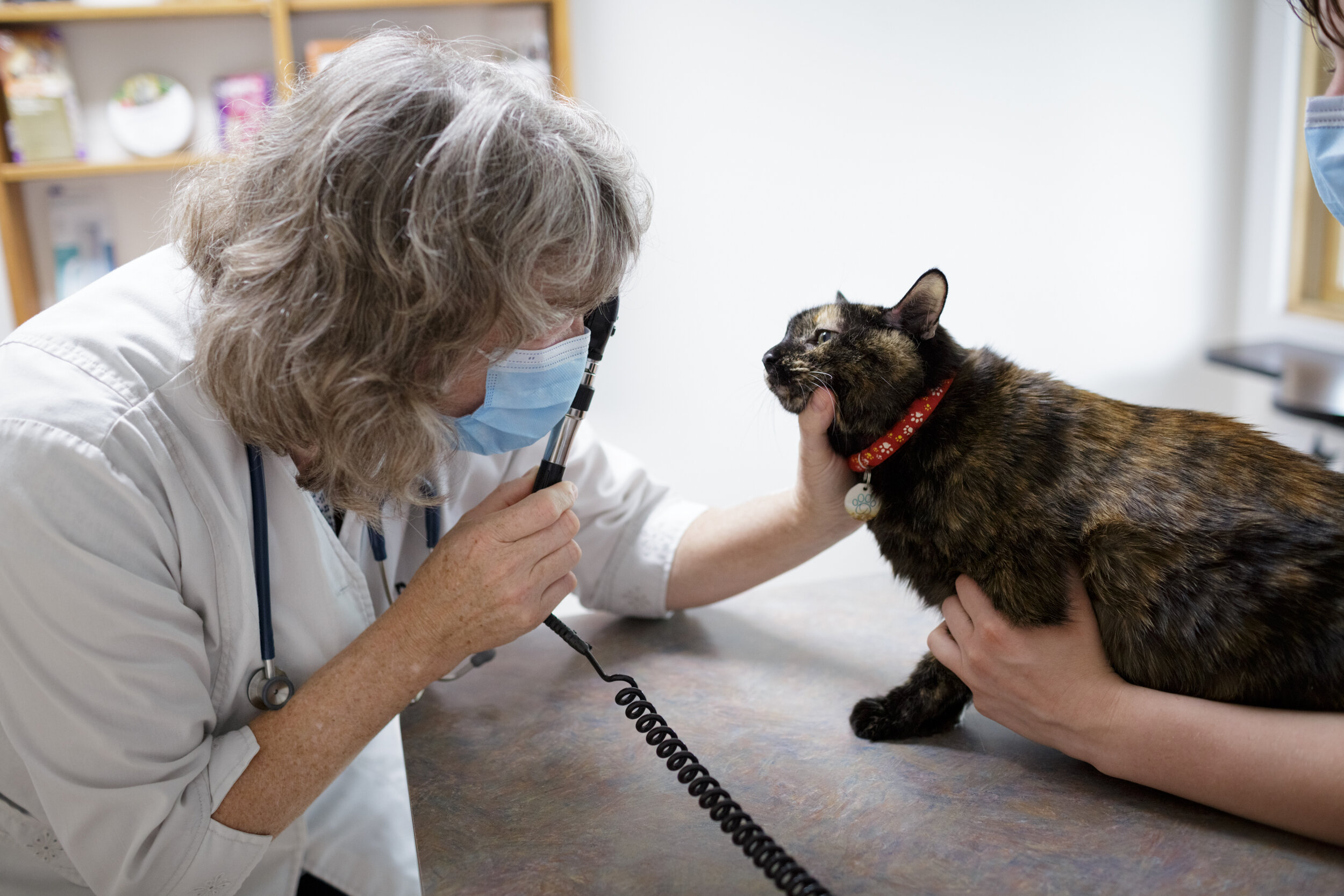Vaccines
Preventative care is the best way to keep your cat healthy, and vaccinations are some of the most effective methods of preventative care.

How do vaccines work?
By introducing a specific piece of a pathogen (usually a protein on or produced by the virus or bacteria), a vaccine encourages the cat’s immune system to develop the appropriate response to that specific pathogen. The cat’s immune system then stores the cells it has developed so when it sees the same piece of a pathogen, it is able to react much more quickly than it could if it had never been exposed to it before; according to the AAFP, a vaccinated cat’s immune response time can be as little as a few minutes, whereas an unvaccinated cat may not develop the correct immune response for weeks (1407).
What are the risks?
All injectable vaccines carry some risk of side effects such as lethargy, loss of appetite, and soreness at the injection site; usually, these side effects are mild and temporary (no more than 24 hours). More serious side effects such as fibrosarcoma are rare; only 1-2 cases of this kind of malignant tumor are reported developing for every 10,000 vaccinated cats (AAFP Advisory Panel 1430). Still, we take the risk seriously and are committed to using only the safest vaccines available and offering alternatives to injectable vaccines whenever possible.
What is the difference between the Adjuvanted Rabies Vaccine (included with VSN) and the PureVax Non-Adjuvanted Rabies vaccine?
The Rabies Vaccine included with VSN is an adjuvanted vaccine. Adjuvants have been associated with injection-site tumors in 1 in 10,000 cats. The Non-Adjuvanted PureVax Rabies vaccine can be obtained through a routine separate vaccine appointment.
What vaccines does Affectionately Cats recommend?
In compliance with the AAFP recommendations, we only vaccinate against those diseases which pose a realistic threat to the health of our patients.
Rabies Vaccine
Though rabies has been largely controlled in the United States due to public education and widespread vaccination requirements, it continues to be a threat to both pets and people. According to the Vermont Dept. of Health, there have been 83 confirmed cases of rabies in VT in 2011-2012, including two cats. Rabies has a nearly 100% fatality rate—that is, almost 100% of the animals (or people) that develop symptoms will die from the disease. Vermont state law requires that all cats be vaccinated against rabies after 12 weeks of age. It is better to vaccinate yearly with a safer, though perhaps less long-lasting, vaccine than to increase the risk of more serious side effects such as fibrosarcoma.Feline Rhinotracheitis-Calici-Panleukopenia (Upper Respiratory Disease) Vaccine
This vaccine covers three different, highly contagious diseases common in kittens. Rhinotracheitis (caused by feline herpes) and Calicivirus are airborne pathogens that cause upper respiratory symptoms such as sneezing, nasal discharge, and watery eyes. Feline Panleukopenia is caused by a strain of parvovirus and can lead to high fever, vomiting, diarrhea, and death particularly in kittens younger than 5 months old. We use an intranasal (nasal drop) vaccine. About 20% of cats will have some sneezing 4-7 days after vaccination. This form of the vaccine is safer and more effective than the injectable form. We give the vaccine to kittens every 3-4 weeks until they are over 16 weeks of age, then every 3 years thereafter. We have seen the disease develop in cats that are not vaccinated after a three year gap.Feline Leukemia (FeLV) Vaccine
Feline leukemia virus is typically spread through repeated or prolonged contact with an infected cat’s bodily fluids—often through bites, nursing, mutual grooming, or sharing water or food dishes; its primary effect is to suppress the cat’s immune system, making that cat more susceptible to other kinds of infection and disease. Most cats build up some immunity to this virus as they age, but kittens are very susceptible both in the womb and while nursing, and once the virus has established itself, it cannot be cured. For that reason, we recommend all kittens be tested for and vaccinated against feline leukemia. The initial series is two vaccinations 3-4 weeks apart, then boostered yearly based on your cat’s risk level. If the cat is established as an indoor only cat at one year of age, we do not recommend a continuation of this vaccine.
